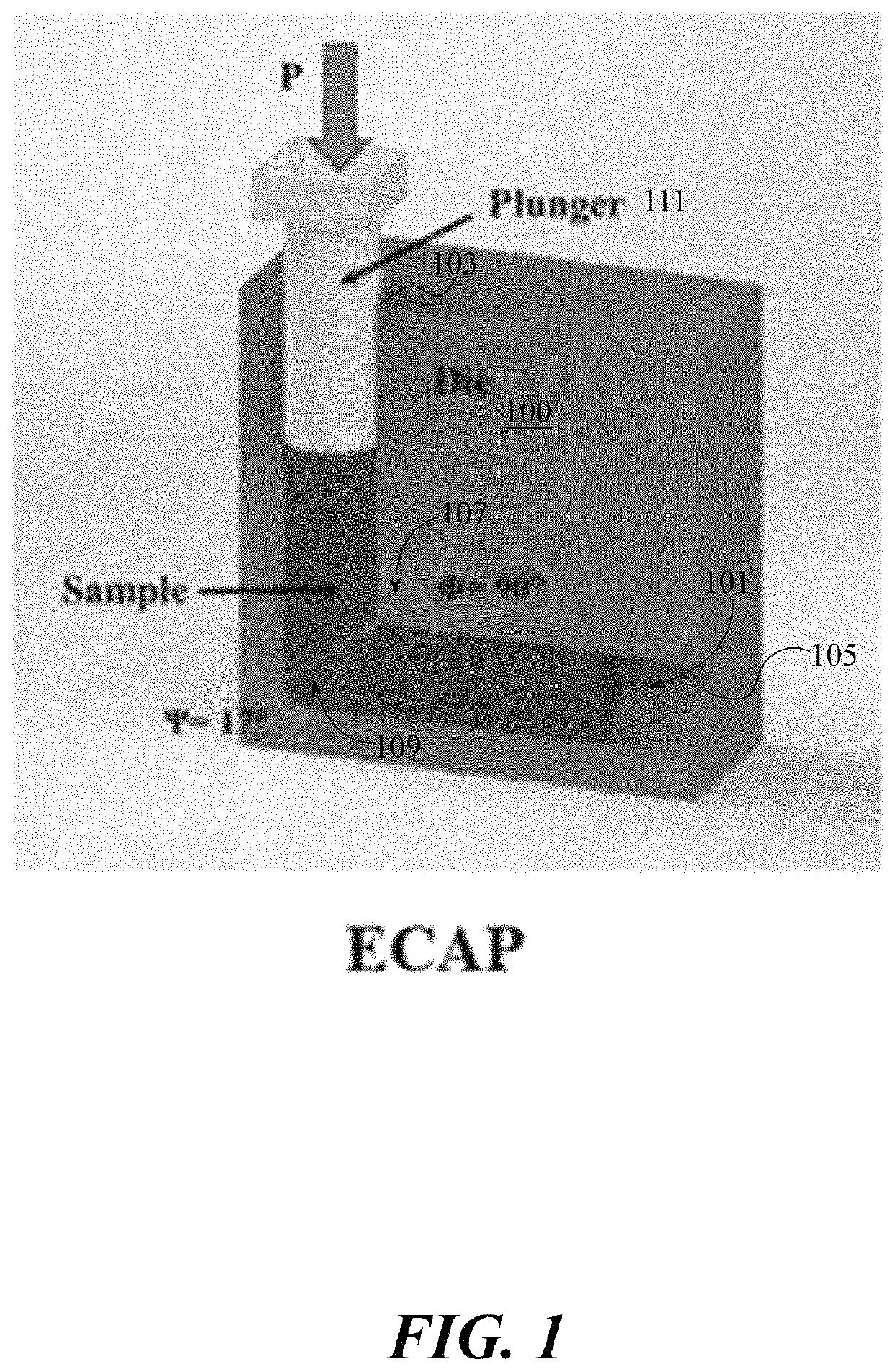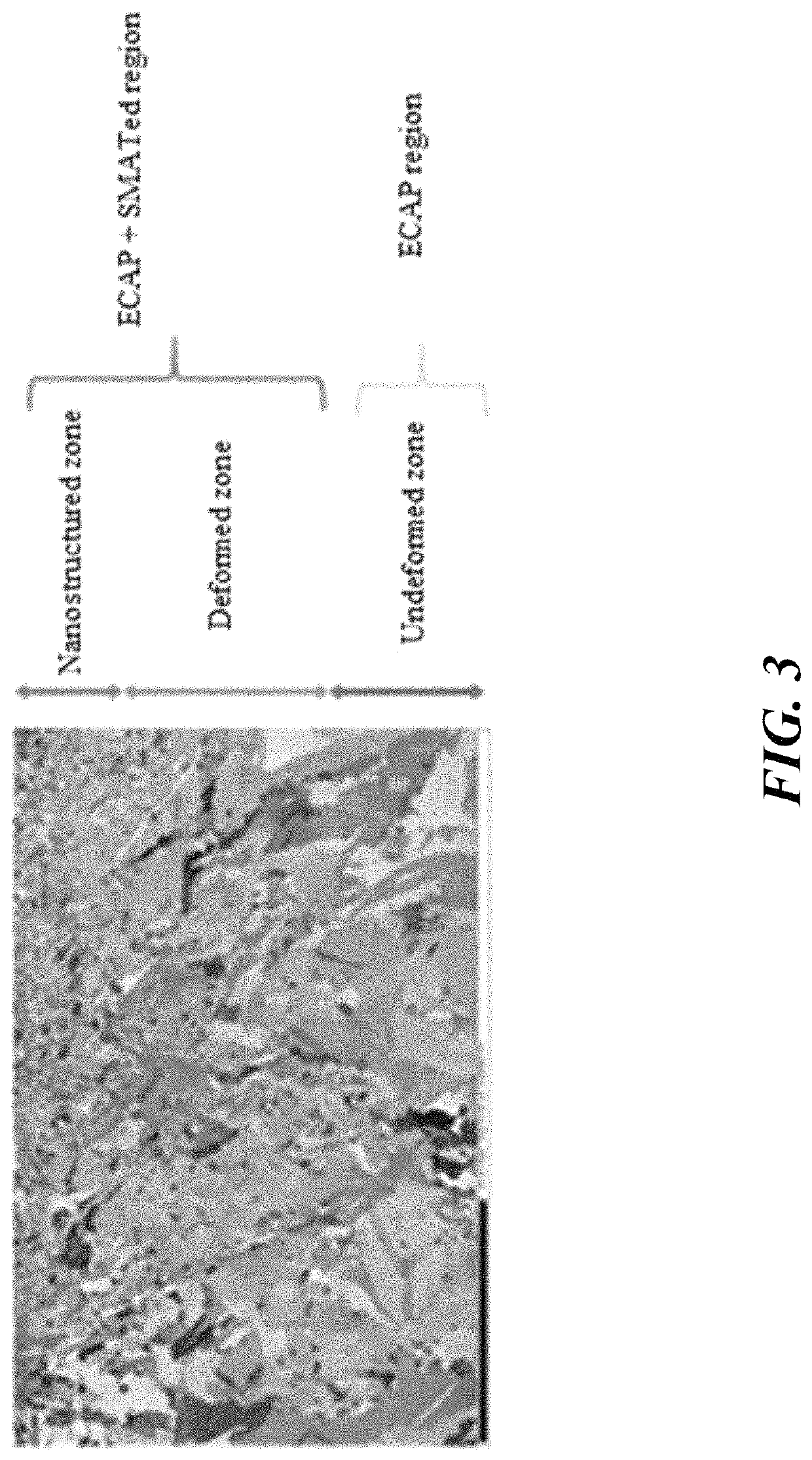Method of modifying surface biocompatibility of a titanium medical implant
a titanium medical implant and biocompatibility technology, applied in the field of titanium medical implants, can solve the problems of adverse health effects of aluminum and vanadium on patients, adverse mechanical effects of titanium, cytotoxicity, etc., and achieve the effects of improving the roughness, wettability and hardness of the commercially pure titanium sample, and improving the biocompatibility of titanium
- Summary
- Abstract
- Description
- Claims
- Application Information
AI Technical Summary
Benefits of technology
Problems solved by technology
Method used
Image
Examples
Embodiment Construction
[0017]All illustrations of the drawings are for the purpose of describing selected embodiments of the present disclosure and are not intended to limit the scope of the present disclosure or accompanying claims.
[0018]The present disclosure describes a method of producing functionally graded titanium using a combination of an equal-channel angular pressing (ECAP) and surface mechanical attrition treatment (SMAT), wherein the produced titanium may be used for medically applicable implants, for example. More specifically, the ECAP processing may improve the biocompatibility and mechanical properties of a titanium sample, preferably commercially pure. On the other hand, the SMAT may improve a roughness, a wettability, and / or a hardness of the titanium sample.
[0019]As illustrated in FIG. 1, the method of the present disclosure includes ECAP processing a titanium sample. When the ECAP processing is performed, the titanium sample is subjected to high plastic deformation with no change to th...
PUM
| Property | Measurement | Unit |
|---|---|---|
| temperature | aaaaa | aaaaa |
| grain size | aaaaa | aaaaa |
| depth | aaaaa | aaaaa |
Abstract
Description
Claims
Application Information
 Login to View More
Login to View More - R&D
- Intellectual Property
- Life Sciences
- Materials
- Tech Scout
- Unparalleled Data Quality
- Higher Quality Content
- 60% Fewer Hallucinations
Browse by: Latest US Patents, China's latest patents, Technical Efficacy Thesaurus, Application Domain, Technology Topic, Popular Technical Reports.
© 2025 PatSnap. All rights reserved.Legal|Privacy policy|Modern Slavery Act Transparency Statement|Sitemap|About US| Contact US: help@patsnap.com



